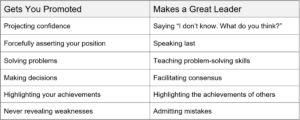Finding employees has never been harder than it is today. The US and Canadian unemployment rates are at or near record lows, and virtually every employer I speak to is struggling to keep up with work demands because they don’t have enough of the right people.
Perhaps the alarmingly high inflation rates will eventually cool the economy and the demand for employees. Even so, it will likely only be a blip in the demand for employees since North American demographics indicate that more employees will be leaving the workforce than entering it over the next decade.
What can business leaders do to find, engage, and keep talent to meet their organization’s demands in the coming years?
The following story provides some insight.
The Real Problem
Cindy is the nurse manager of an ICU in a busy hospital. Her unit is chronically understaffed, and turnover is higher than she’d like, which is understandable given the current national shortage of nurses.
Hospital management has spoken to Cindy several times about her unit’s staffing and turnover problem and made it clear that fixing this problem must be her #1 priority.
Shortly after her boss spoke to her again about her staffing issues, Phil, one of the best nurses on Cindy’s team, walked into her office and told her he was leaving to take a position in a different unit at the same hospital. Cindy’s heart sank.
After she got over the initial shock, she asked Phil if there was anything she could have done to keep him. “No,” he replied. “The other unit has better hours, so I won’t have to work as many evenings and weekends. It’s a work/life balance thing and has nothing to do with you.”
Cindy was already short staffed and under pressure from management to fix her staffing problem, and one of her best nurses was leaving her for something she had no control over.
If you are a manager, perhaps you can empathize with Cindy.
Here’s the rest of the story.
Later that day, Cindy told Jen, the senior nurse on her team, about Phil’s resignation. Jen asked Cindy if Phil told her why he was leaving. “He said he’s leaving for better hours,” Cindy said.
Jen gave Cindy a knowing look and said, “I guarantee you there are other reasons why he’s leaving.”
The next day Cindy hauled Phil back into her office. “Phil, I need you to be honest with me. Is there any other reason why you’re leaving? I really need to figure out my turnover problem.” Phil thought for a moment, then decided to take a risk.
“Some of the nurses and I feel that you micromanage us. For instance, you send us emails at two o’clock in the morning to ask us to justify decisions we made during our shift, and it makes us feel like you don’t trust us to do our job.”
“Well, Phil,” Cindy replied, “you don’t understand the pressure I’m under from my boss. If I don’t . . .” That’s when Phil tuned out. It was obvious that Cindy didn’t want his feedback, and her response assured him that leaving was the right decision.
If you have ever lamented how difficult it is to keep good people, consider this question:
Is it possible that you have more influence over your people-related problems than you think you do?
Despite all the market conditions that are outside your control, three key factors are within your control and are certain to increase your organization’s chances of attracting, retaining, and engaging employees.
When you boil down what all the labor surveys and exit interviews are telling us, people want three key things from their employer:
- To feel that their employer cares about them
- Good leaders
- Career development opportunities
Here are three questions business leaders should ask themselves before they attribute their staffing challenges to a tight labor market.
1. Is Employee Wellness Your First Priority?
I recently read an article by an author who provided the following career advice to millennials and gen-Z’s: “Don’t try to love your work. Your work won’t love you back.”
While I don’t agree with the first part of that advice, the sad truth is that the second part is probably accurate.
A recent Gallup survey showed that only 24% of US employees feel strongly that their organization cares about their well-being. However, when employees feel that their employer truly cares about them, they are 69% less likely to search for a new job, 71% less likely to experience burnout, and three times more likely to be engaged at work.
If we want employees to care deeply about their work, then we must first care deeply about our employees.
This means we must care about our employee’s whole self, not just their work self. It means going way beyond the obligatory “How was your weekend?” and being aware of:
- How things are going at home
- Chronic health problems
- Any physical or mental health challenges their kids are facing
- Their kids’ interests and activities
- If they are caring for an elderly parent
- If something at work is bothering them—and if that something is you
When you care about someone, you try to be in tune with what’s going on in their life. Why? So you can help ease their burdens, if possible.
The business of leadership is caring deeply about those you lead—caring about their whole self, not just about their work self.
2. Are You Serious About Improving Your Leadership?
I don’t know any CEO who would say they are not serious about improving the leadership of their management team. However, 75% of Americans say their boss is the most stressful part of their workday, and more than half say their boss is mildly or highly toxic. Clearly, there is a massive gap between what CEOs think they are doing to improve leadership within their organization and the impact it’s having on employees.
One reason for this gap is what I call “the leadership paradox,” which is:
Many of the attributes that get people promoted are the exact opposite of the attributes that make great leaders.
Here are a few examples of the leadership paradox:
The first step to increase the quality of leadership within your organization is to identify the leadership behaviors that you want people to demonstrate and then only promote people who do. This is not as difficult as it may sound, but it takes:
- the will to do a thorough analysis of the behaviors that have the highest positive impact on people and results,
- the discipline to make those behaviors the primary promotion criteria, and
- the humility to make promotion decisions by committee.
Until organizations articulate what good leadership looks like and promote people based on those criteria, we can expect managers who are poor leaders to continue to dominate our workplaces.
3. Are You Serious About Developing Others?
Over the past decade, countless surveys have repeatedly cited “lack of career development opportunities” as one of the top reasons employees decided to leave their employer. Most employers are clearly not doing enough to develop their people.
Even worse, if internal opportunities exist, only one third of employees are looking internally first, and only 17% of employees feel their manager helps them apply for internal openings.
You are never going to have enough people if you don’t prepare the ones you have for greater responsibilities and help them attain them.
Here are a few questions to help you assess your career development program:
- Is career development the glossed-over last page of the performance review, or are career-development discussions held separately?
- Do managers consider career development as important as performance management?
- Are career-development activities focused on taking courses or providing new experiences?
- Do managers have several in-depth career-development discussions with their staff each year?
- Can employees choose who will help them advance their career within the organization?
Becoming a world-class people developer is possible, and it’s within reach.
The Secret Formula for Attraction, Engagement, and Retention
There are a lot of things that are outside employers’ control when it comes to attracting, engaging, and retaining employees, but the things that matter most in any type of labor market are:
- Is employee wellness your first priority?
- Are you serious about improving your leadership?
- Are you serious about developing others?
Employers who can say yes to those three questions are 40% more productive with 30–50% higher operating margins than the rest. More importantly, leaders who answer affirmatively to these questions are far more likely to achieve their goals, and to make a positive impact on the lives of those they lead.







2 Responses
Great article. However Cindy would say that she does not have time to find out her employees wellness because she’s trying to respond to the pressure from her boss who’s responding to his boss. The bottle neck is always at the top. As we say in my business “ people don’t care what you know until they know how much you care”. Three great points
Yup, a culture of strong leadership must start at the top. However, managers at every level can become a stronger leader with or without their manager’s support simply by making the time to demonstrate they care.